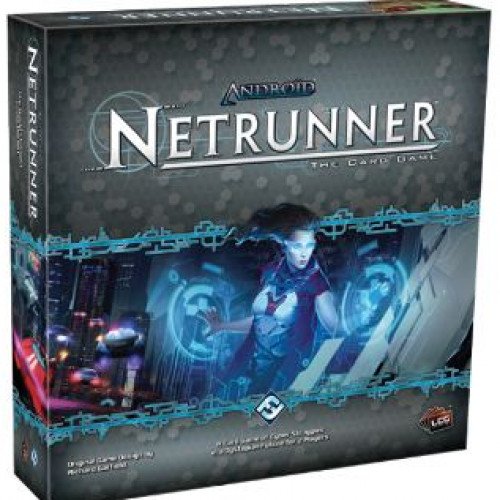ANDROID: NETRUNNER VS SECTOR 41

ANDROID: NETRUNNER
Android: Netrunner is a Living Card Game (LCG) produced by Fantasy Flight Games. It is a two-player game set in the dystopian future of the Android universe. Each game is played as a battle between a megacorporation and a hacker ("runner") in a duel to take control of data. It is based on Richard Garfield's Netrunner collectible card game, produced by Wizards of the Coast in 1996. In 2017, a second edition of the core set was announced which replaced some of the original cards with cards from the first two expansion cycles. In 2018, the game was discontinued due to the license with Wizards of the Coast ending. Fantasy Flight stated that Netrunner products will no longer be sold by them as of October 22, 2018, and Reign and Reverie was the last expansion. Like the original, the game is asymmetric and involves two players, one playing a hacker ("the Runner") and the other playing a corporation ("the Corp"). The Runner wins by stealing seven or more points worth of agenda cards or if the Corp can't draw a card when required (due to an empty deck). The Corp wins by scoring agenda cards worth a total of seven or more points or if the Runner is forced to discard more cards than they have in their hand.
Statistics for this Xoptio

SECTOR 41
Sector 41 is a board game published by David Long and Michael Lachtanski of Scimitar Games. The game became available for pre-order in February 2009 and was officially released in April 2009. Sector 41 is a turn-based strategy game for two to four players. Game play takes place on a 9×9 grid of face-down tiles, randomly shuffled at the beginning of each game. Players control one mother ship which moves along the edge of the game board. Mother ships can deploy up to three explorer ships onto the face-down grid. Explorer ships are used to discover, mine, and tow deposits of Glynium to their mother ship. According to the game background, Glynium is an unstable power source only found in this sector. Victory is achieved when one player has mined more Glynium than any other player could match. In the case of a tie, the first person to reach that score is declared the victor. Sector 41 was developed from a compilation of game concepts developed by David Long and Michael Lachtanski, the earliest of which go back to the mid-1990s. The name itself is an homage to the popular Area 51 science fiction theme. Play testing began in late 2007 and lasted until production began in late fall of 2008. The face-down tile set up was conceived of to emulate the fog of war mechanism, popular in many computer games. The developers also encourage players to strategically manipulate the board layout for offensive and defensive purposes through the process of "folding space". This game mechanism was inspired by the Dune novels. The lengthy play time in the initial play testing lead developers to create the Guardian figure. The Guardian, described below, acts as a mechanism for rewarding exploration, expansion, and reduced play time dramatically. Additional rules for modifying the Guardian's role in gameplay are available on the Scimitar Games website. Michael Lachtanski designed the game's graphics. Many of the space graphics are based on images from NASA.